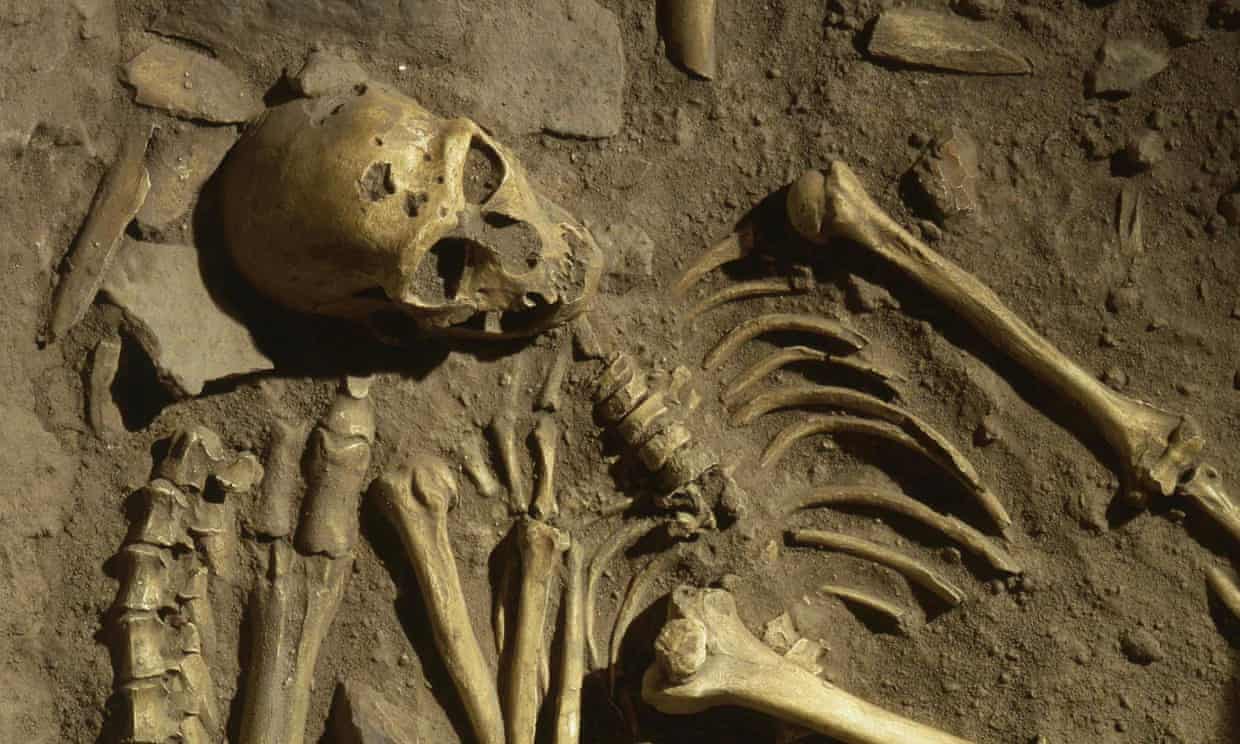A Neanderthal tomb burial near the village of La Chapelle-aux-Saints in France. Author James Bradley asks: what would it mean if the deep past were to come to life?
Photograph: The Art Archive/Alamy
The climate emergency is unsettling our future, and erasing what we thought was certain about the past
In 2015, flooding exposed the frozen bodies of two cave lion cubs in the Yakutia region of Russia. Members of a species that vanished at the end of the last Ice Age, the pair were buried approximately 12,000 years ago when the roof of their den collapsed and trapped them in the frozen ground. In photos, their faces are so well-preserved one might almost believe they are only sleeping.
Yet despite their unusually perfect condition, the cubs are not the only such relics to have appeared in recent years. Throughout the Arctic and subarctic, animals and artefacts buried for thousands of years are reappearing, liberated from their frozen graves by the rapid warming in the region. In the Alps and elsewhere, bodies of people lost for decades in the mountains are emerging from the ice as glaciers melt. In Australia, towns submerged for generations are resurfacing as dam levels fall due to drought and heat.
As British author Robert Macfarlane has observed, these uncanny emergences or “Anthropocene unburials” are part of a larger process of unsettlement and unhinging. As human time and geological time collapse into one another, the deep past is erupting into the present all around us with terrifying and uncanny consequences. What was fixed is now in flux, what was settled is being swept away faster than we can save it. Nor is it just the past that has become unstable. The climate emergency is unsettling our future as well, erasing what we thought was certain, what we thought we knew.
Read the rest of this article...

No comments:
Post a Comment